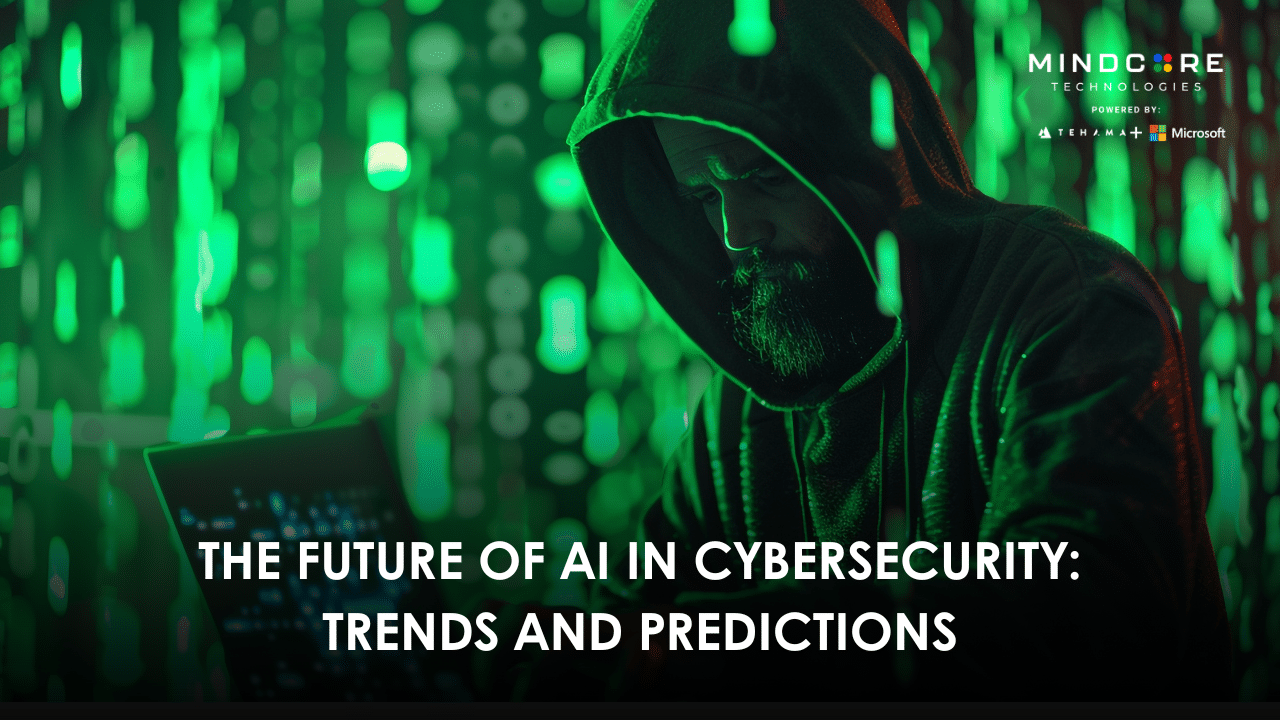Cybersecurity threats are evolving faster than ever. Hackers are getting smarter, attacks are becoming more complex, and traditional defenses are struggling to keep up. This is why AI has become a critical tool for modern cybersecurity. But we are just getting started.
In this blog, we’ll explore the future of AI in cybersecurity, the key trends driving its growth, and what businesses should prepare for.
The Growing Role of AI in Cybersecurity: From Support Tool to Core Defense
AI started in cybersecurity as a support tool, helping automate tasks and filter alerts. It is now becoming the central component of defense strategies. In essence, businesses have been transforming from reactionary to proactive protection, aided by real-time threat detection and response imparted by AI.
Leading AI cybersecurity companies are spearheading this transition, thrusting AI from being a mere “assistant” into a complete defender.
Trend #1: Predictive AI for Preemptive Threat Detection
One of the significant shifts is the growing ability of predictive AI to anticipate threats before they actually hit. Drawing from the global threat data, user behavior, and pattern history with considerable success, AI is able to predict events like zero-day exploits and ransomware campaigns.
In this way, businesses can pre-emptively shore up their defenses. AI cybersecurity tools with predictive capabilities are quickly becoming a standard in modern security arsenals.
Trend #2: Autonomous AI Security Agents and Self-Healing Systems
AI is progressing towards more autonomy, with self-healing networks and smart AI agents increasingly being capable of independently isolating and neutralizing low-level threats. These systems perform just-in-time fixes to vulnerabilities, restore files, and block malicious traffic.
Still, when it comes to the critical decisions, human oversight cannot be sacrificed. Hence, human experts must collaborate with AI for its responses to be accurate and ethical.
Trend #3: Explainable AI (XAI) for Transparent Cyber Defense
As AI takes on bigger roles in cybersecurity, transparency becomes vital. Explainable AI (XAI) helps security teams understand why AI made certain decisions.
This is especially important in industries like finance and healthcare, where compliance and trust are non-negotiable. Ethical AI practices are driving the demand for systems that are not just effective but also explainable.
Trend #4: AI-Powered Adaptive Security Frameworks
The future of cybersecurity requires systems that can adapt in real-time. AI-powered adaptive security frameworks adjust defenses based on evolving threats and changing environments.
These frameworks protect cloud infrastructures, IoT devices, and hybrid networks by dynamically shifting defense strategies. AI cybersecurity solutions with adaptive capabilities are becoming a must-have for businesses with complex digital landscapes.
Trend #5: Quantum-Resistant AI Cybersecurity
Quantum computing poses a new kind of cybersecurity threat. As quantum technology advances, current encryption methods could become obsolete. AI is playing a key role in developing quantum-resistant cybersecurity measures.
By identifying vulnerabilities and supporting quantum-safe algorithms, AI helps prepare businesses for this next wave of challenges. Companies leading in AI cybersecurity innovation are already investing in quantum-resilient solutions.
Trend #6: AI-Driven Threat Intelligence Sharing Networks
One emerging trend is the rise of AI-powered threat intelligence sharing platforms. These systems use AI to collect, analyze, and share real-time threat data across industries and regions. By pooling knowledge, businesses can strengthen their defenses against emerging threats.
AI automates the correlation of threat indicators, providing faster, actionable insights to participants. This collaborative approach reduces the time it takes to identify and respond to global cyberattacks, making cybersecurity efforts more unified and proactive.
Trend #7: AI for Insider Threat Detection and Behavioral Analytics
While external attacks are a major concern, insider threats remain one of the most difficult to detect. AI’s ability to monitor user behavior and identify anomalies is transforming how businesses handle insider risks.
By analyzing patterns in employee actions, AI can flag suspicious activities, such as unusual data access or file transfers, in real-time. This proactive monitoring helps prevent data breaches caused by negligence or malicious insiders.
Behavioral analytics powered by AI is becoming a critical component of advanced cybersecurity frameworks, ensuring that threats from within are not overlooked.
The Intersection of AI, Regulations, and Cybersecurity Governance
With AI’s growing power comes increased regulatory scrutiny. Laws like GDPR and emerging AI-specific regulations are shaping how businesses can use AI in cybersecurity.
Compliance is no longer optional. Businesses must adopt AI governance models, ensure transparency, and invest in AI cybersecurity certifications to stay ahead.
Future Challenges: What Could Hinder AI’s Cybersecurity Potential
While AI offers huge benefits, it’s not without challenges. Data privacy concerns are at the top of the list. Hyper-connected AI systems must handle sensitive data responsibly. Over-reliance on AI without human oversight is another risk. Businesses need to balance automation with expert analysis.
Attackers are also leveraging AI. From AI-generated phishing emails to deepfake scams, the threat landscape is evolving. Defensive AI must stay ahead of these offensive tactics. Another emerging challenge is the increasing complexity of AI models themselves. As AI systems become more advanced, understanding and managing their operations becomes harder. This complexity can lead to “AI sprawl,” where multiple disconnected AI tools create visibility gaps and operational inefficiencies.
To address this, businesses are looking towards unified AI cybersecurity platforms that offer end-to-end visibility and centralized management. This shift ensures that while AI evolves, it remains controllable and effective without overwhelming security teams.
Preparing for the Future: Steps for Businesses
To future-proof cybersecurity strategies, businesses should:
- Invest in scalable, adaptive AI tools: Choose solutions that can grow with your needs.
- Build AI-literate security teams: Train staff in AI-driven cybersecurity practices.
- Establish ethical AI governance: Ensure transparency, accountability, and compliance.
- Stay informed on AI cybersecurity trends: Continuously monitor industry developments.
These steps ensure businesses are ready to leverage AI’s full potential while managing its risks.
Conclusion
AI is not just a trend—it’s the future of cybersecurity. Its ability to predict threats, automate responses, and adapt to new challenges makes it an essential part of modern defense.
However, businesses must balance innovation with responsibility. Ethical practices, regulatory compliance, and human expertise remain crucial. By embracing AI’s future thoughtfully, companies can build stronger, smarter, and more resilient cybersecurity strategies.


